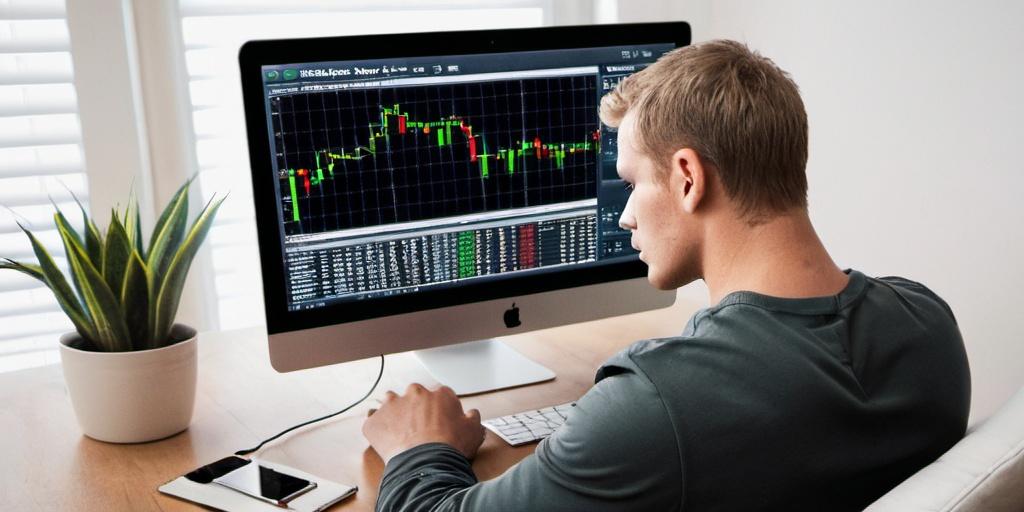Day Trading
What Is Day Trading?
Day trading is the practice of buying and selling financial instruments within the same trading day, often closing all positions before the market closes. It is distinct from swing trading, which holds positions for days or weeks, and from long-term investing, which spans months or years. Day trading requires close monitoring of the market and rapid decision-making based on price action, technical analysis, and short-term patterns. If you want to learn how to use all these tools then we recommend that you visit DayTrading.com. A website dedicated to day trading and that contains thousands of guides and other helpful articles.
The goal is to profit from small price movements in high-volume assets. These trades can last from a few minutes to several hours, but the defining trait is that no positions remain open overnight.

Who Trades This Way
Day trading is commonly associated with professional traders, proprietary trading firms, and full-time individuals who can dedicate several hours per day to market analysis and order execution. However, with increased access to online platforms, more retail traders have entered the space.
Some approach it as a full-time effort, while others use it to supplement income or gain experience with price behavior under live conditions.
Markets Used for Day Trading
Day traders typically focus on liquid markets with narrow bid-ask spreads and high intraday volatility. The most common include:
- Stocks, particularly large-cap equities with strong volume
- Forex pairs like EUR/USD, GBP/USD, or USD/JPY
- Futures contracts on indices, commodities, or interest rates
- Cryptocurrencies, especially during high-volatility periods
Volume and volatility are essential. Illiquid assets increase slippage, while low volatility reduces profit potential.
Common Strategies
Most day traders rely on technical analysis, using tools like candlestick patterns, moving averages, VWAP (volume-weighted average price), and momentum indicators. Strategy types include:
- Scalping: High-frequency trading with very short holding times, often seconds to minutes.
- Momentum trading: Entering trades based on strong directional movement.
- Reversal or mean reversion: Betting on a price pullback after a strong move.
- Breakout trading: Taking positions when prices move outside of established ranges or technical levels.
Successful day traders typically stick to a defined playbook, execute with discipline, and use risk controls on every trade.
Risk Management and Capital Considerations
Day trading carries significant risk. Because trades are frequent and highly leveraged in many cases, losses can accumulate quickly without strict controls. Key practices include:
- Position sizing that aligns with account size and risk tolerance
- Use of stop-loss orders to cap downside
- Avoiding overtrading or revenge trading after losses
- Tracking performance with journals or trade logs
Most professionals recommend risking no more than 1-2% of account capital per trade. Traders also need to account for commissions, spreads, slippage, and taxes when calculating net returns.
Technology and Execution
Fast and reliable execution is critical. Most day traders use direct market access (DMA) brokers or platforms with minimal order routing delays. Tools often include:
- Level II market data for depth and order book visibility
- Real-time charting and indicator customization
- Hotkeys for faster trade entry
- Custom alert systems
Latency, chart lag, or delayed news feeds can result in missed trades or unfavorable fills.
Psychological Demands
Day trading requires more than market knowledge—it demands emotional control. Constant decision-making under pressure, exposure to wins and losses within minutes, and the need to stay focused for hours at a time contribute to mental fatigue.
Discipline, patience, and the ability to follow a system without deviation often separate profitable day traders from inconsistent ones. Without a structured process, even technically strong traders may struggle to remain profitable over time.
Legal and Regulatory Factors
In many countries, day trading is subject to specific rules. In the U.S., the Pattern Day Trader (PDT) rule applies to accounts under $25,000, limiting the number of trades over a five-day period. Other jurisdictions may have margin rules or capital requirements for frequent trading.
Tax treatment of day trading profits also differs from longer-term investing. Profits may be considered short-term capital gains and taxed at higher rates, or in some cases, classified as business income.
Conclusion
Day trading is a high-speed, high-stakes form of trading that appeals to those who can dedicate time, focus, and capital to short-term price movements. It offers flexibility and immediacy, but the barrier to consistent profitability is high.
Success requires a disciplined strategy, solid risk control, emotional stability, and a clear understanding of the tools involved. For those with the resources and experience to manage it, day trading can be an active way to participate in financial markets—but it demands more than most realize at the start.
This article was last updated on: July 24, 2025